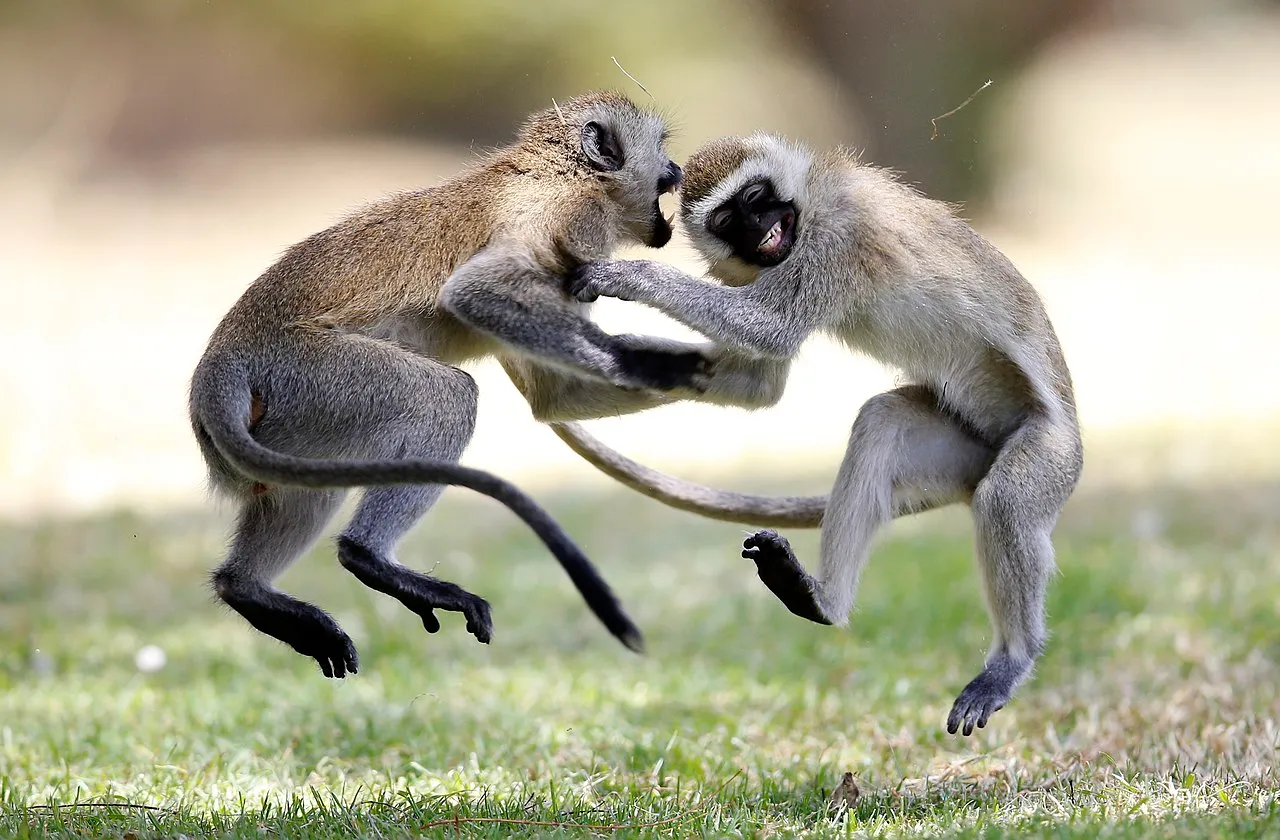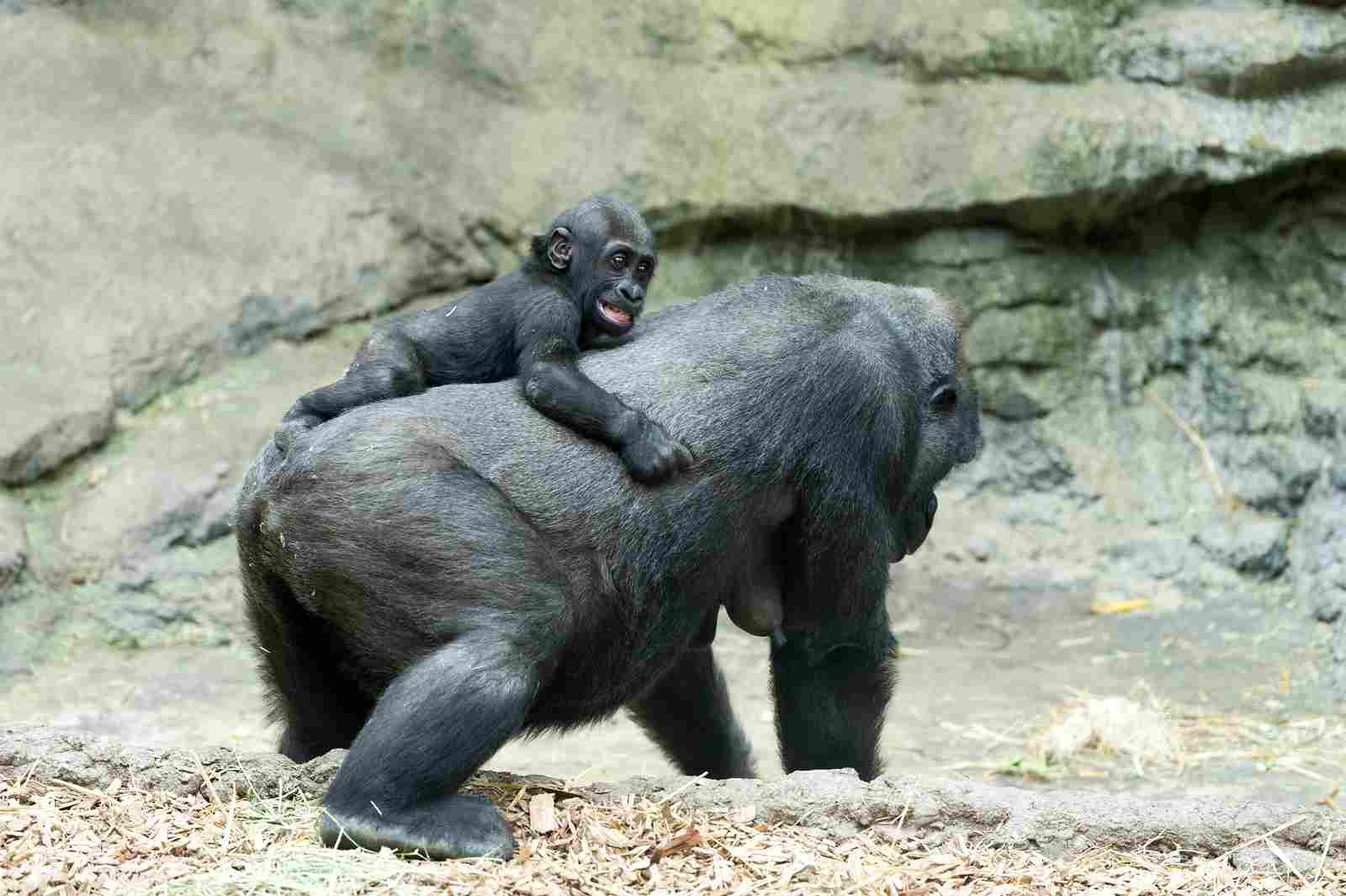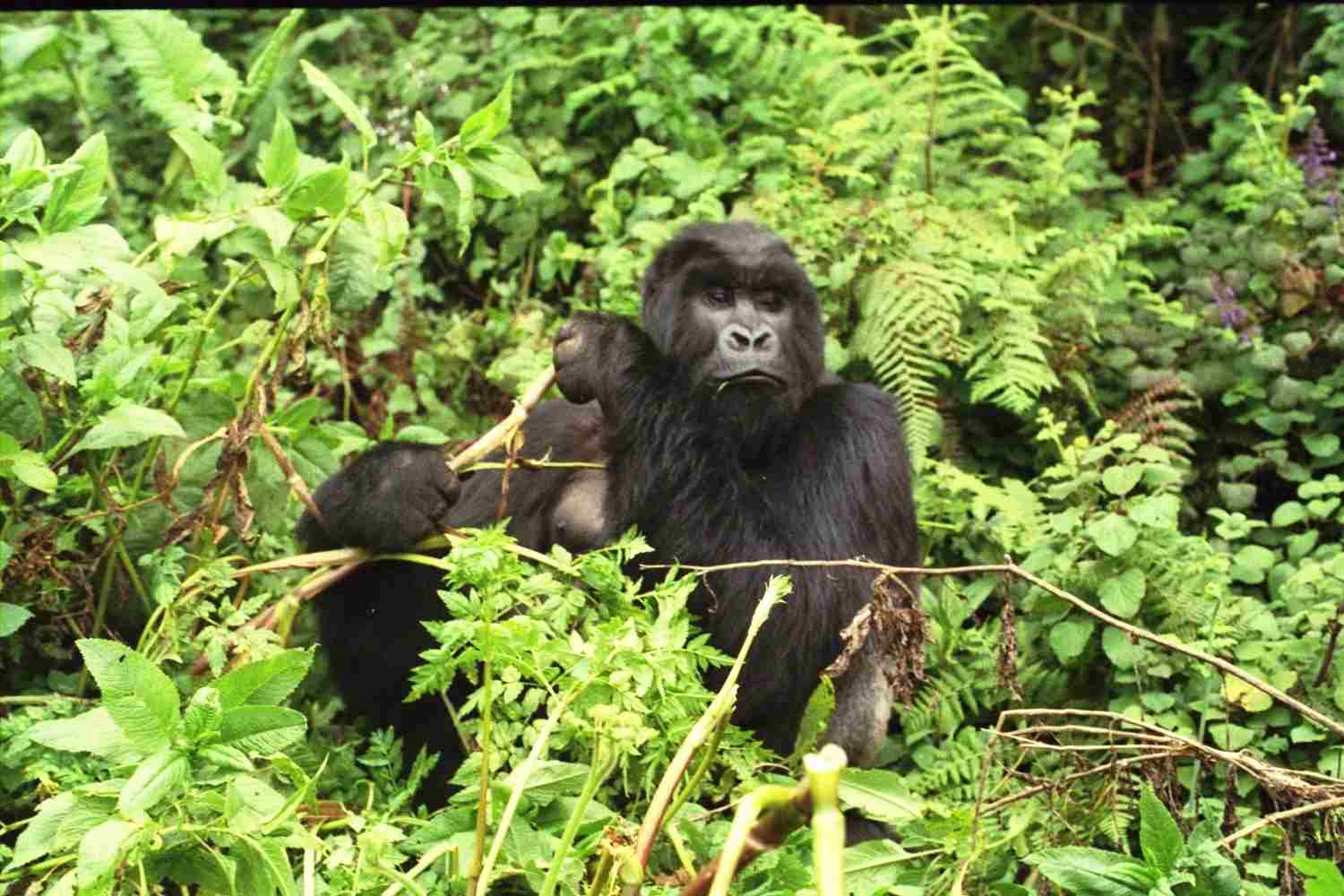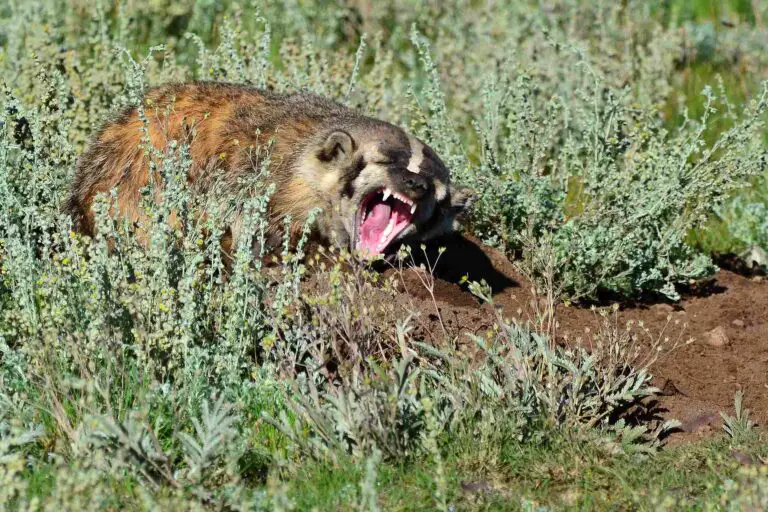Gorilla Vs Monkey Size, Weight, Overall Comparison
Gorillas and monkeys, both part of the primate family, exhibit intriguing differences in biological and physical traits. Gorillas, known for their strength, thrive in dense forests, while monkeys, with their agility and diverse species, navigate various environments. This analysis explores taxonomy, appearance, size, weight, strength, and aggressiveness to assess the potential outcome of a one-on-one confrontation between a gorilla and a monkey.
Gorilla vs Monkey: Who Will Win in a Fight/Physical Confrontation?
In a one-on-one confrontation, a lone gorilla is likely to easily overpower a monkey due to its larger size, greater weight, far superior strength, and heightened aggressiveness.
I). Size and Weight Advantage:
– Gorillas, being much larger and heavier than monkeys, establish a substantial advantage in one-on-one confrontations, using their size to dominate.

II). Strength Advantage:
– The sheer strength of gorillas far surpasses that of monkeys, providing them with the physical power needed to easily overcome opponents in confrontational scenarios.
III). Aggressiveness Advantage:
– Marked by a more aggressive nature, gorillas outmatch monkeys in confrontational scenarios, showcasing a formidable demeanor that contributes to their success.
While monkeys may possess agility, it may serve primarily as a means of escaping rather than confronting the far stronger and larger gorilla.
IV). Monkey’s Use of Agility:
– Monkeys may rely on their agility to escape to safety, recognizing that their size and strength are no match for the overwhelming advantages of a gorilla in a direct physical confrontation.
*Details of Comparison
| Criteria | Gorilla | Monkey |
| Taxonomy | Family: Hominidae |
Varied families including Cercopithecidae, Cebidae, etc.
|
| Appearance | Robust build, sagittal crest, dark hair |
Diverse appearances, sizes, fur colors, varied features
|
| Size | Larger, males 5.6-5.9 feet |
Varies widely in size
|
| Weight | Heavier, males 300-400 pounds |
Broad weight range
|
| Bite Force (PSI) | Higher, around 1,300 PSI |
Varies, generally lower than gorillas
|
| Physical Offensive Adv. | Strength, intimidation, displays |
Agility, quick movements, some aggressive behaviors
|
| Physical Defensive Adv. | Size, protective nature |
Agility, speed, communal defense mechanisms
|
| Speed | Estimated 20 mph |
Generally higher speed capabilities
|
| Agility | Limited, adapted for ground movement |
Highly agile, adapted for arboreal life
|
| Senses | Well-developed sight, hearing |
Keen senses of sight, hearing, smell
|
| Overall Phys. Capacity | Strength, limited agility |
Broad range of physical capacities, high agility
|
| Habitat Preference(s) | Dense forests, montane or lowland |
Varied, including rainforests, savannas, mountains
|
| Tracks | Distinctive large footprints with opposable toes |
Varies, generally smaller and less defined toes
|
| Lifespan | Generally 35-40 years in the wild |
Varies widely among species
|
| Mode of Feeding | Herbivorous, folivores, frugivores |
Varied diets including fruits, leaves, insects
|
| Intelligence | Highly intelligent, problem-solving abilities |
Varies among species, some exhibit high intelligence
|
| Social Behavior | Cohesive family groups, dominance displays |
Varied social structures, grooming, vocalizations
|
| Mode of Reproduction | Low reproductive rate, single offspring |
Varies, some give birth annually, different intervals
|
| Parental Behavior | Strong maternal bonds, male protection |
Varied, some show strong maternal care, others differ
|
| Proximity to Human Areas | Generally remote areas |
Varied, some near human settlements
|
| Behavior Toward Humans | Generally shy, defensive if threatened |
Responses vary, some curious, cautious, or aggressive
|
| Danger Posed to Humans | Generally not considered dangerous |
Rarely pose significant danger, some aggression
|
| Associated Precautions | Caution to avoid provoking, habituation in tourism |
Precautions to avoid direct eye contact, respect territory
|
| Conservation Status | Varies among species, e.g., endangered for mountain gorillas |
Diverse conservation statuses, from endangered to least concern
|
| Conclusion – Similarities | Both belong to Primates, exhibit complex behaviors |
Both play crucial roles in ecosystems, share common ancestry
|
| Conclusion – Differences | Gorillas larger, herbivores; Monkeys vary in size, diet, and habitat |
Reproductive strategies, parental care, conservation statuses differ
|
Key Points
- Gorillas are larger, herbivorous, and primarily ground-dwelling, whereas monkeys vary greatly in size, diet, and habitat preferences.
- Gorillas exhibit strength and limited agility, while monkeys showcase a broad range of physical capacities and high agility, especially in trees.
- Both species have well-developed senses, exhibit intelligence, and play crucial roles in their respective ecosystems.
- Conservation statuses vary widely among gorilla and monkey species, emphasizing the need for tailored conservation efforts.
- Gorillas generally exhibit reserved behavior toward humans, while monkey responses vary widely.
1. Taxonomy
Gorilla:
Family: Hominidae
Genus: Gorilla
Species: Gorilla beringei (Mountain Gorilla), Gorilla gorilla (Western and Eastern Lowland Gorilla)
Monkey:
Varied families including Cercopithecidae, Cebidae, Callitrichidae, and others
Examples: Cercopithecidae includes baboons, macaques; Cebidae includes capuchins, howler monkeys.
2. Appearance
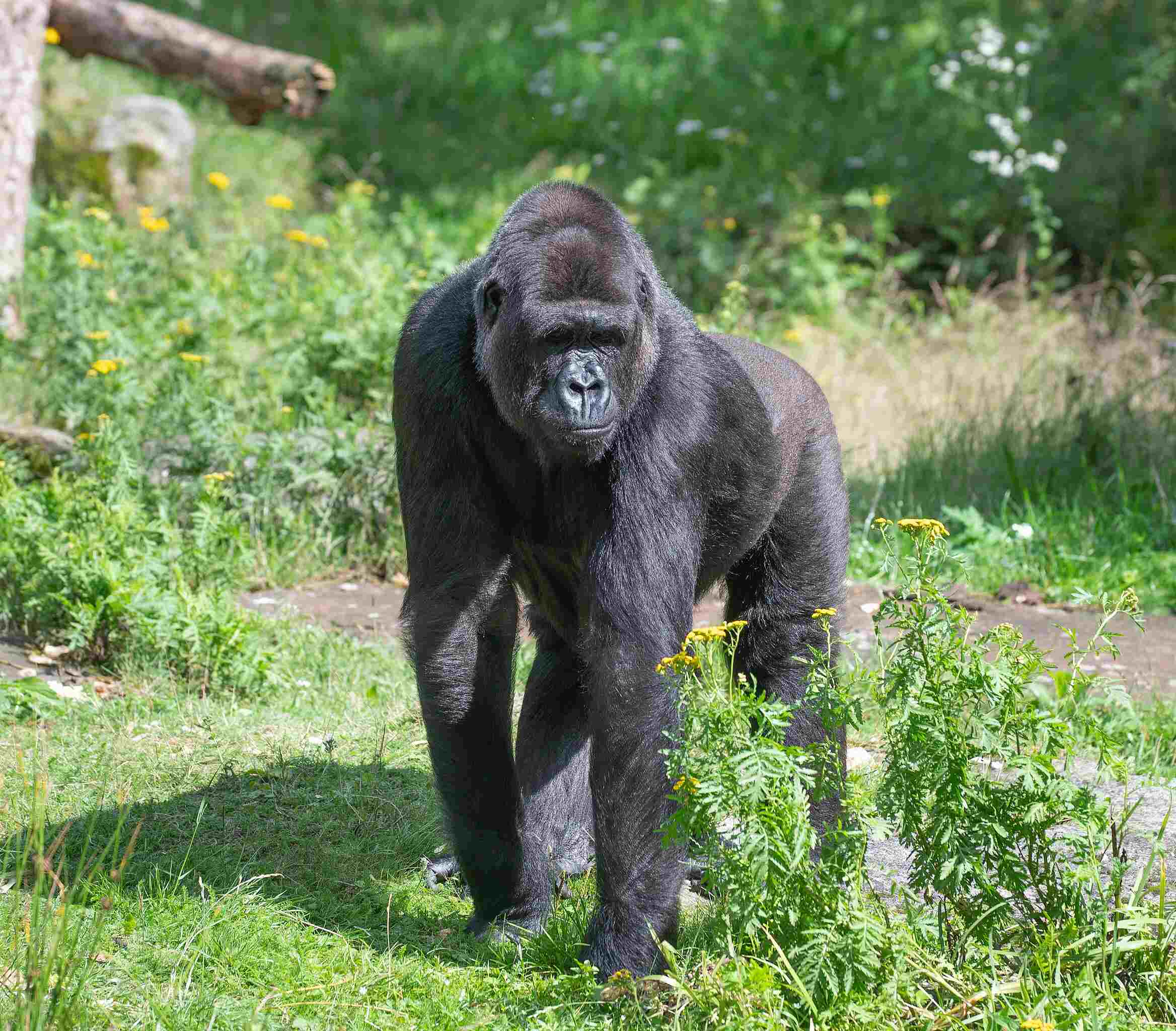
Gorilla:
Robust build with broad chests and shoulders
Prominent sagittal crest on the skull, more pronounced in males
Dark hair, often with a silver-gray patch on the back in mature males
Monkey:
Diverse appearances ranging from small to medium-sized
Limbs adapted for climbing, with prehensile tails in some species
Varied fur colors, patterns, and facial features
Comparison: Gorillas exhibit a distinctive and robust appearance, while monkeys display a wide range of morphological adaptations suited to their diverse habitats and lifestyles.
Ecological Implications: Gorilla’s robust build aids in ground-based foraging in forests, while monkeys’ varied appearances reflect adaptations to arboreal life, emphasizing agility and climbing capabilities.
3. Size
Gorilla:
Adult males: 5.6 to 5.9 feet (1.7 to 1.8 meters) tall when standing
Adult females: Smaller than males
Monkey:
Varies greatly; small species around 4 inches (10 cm), larger ones up to 3 feet (1 meter)
Comparison: Gorillas are generally larger, especially adult males, compared to the diverse sizes found among monkey species.
Ecological Implications: Size impacts the ecological niche, with gorillas utilizing their size for ground-based foraging, while smaller monkeys may navigate trees more efficiently.
4. Weight
Gorilla:
Adult males: 300 to 400 pounds (136 to 181 kg)
Adult females: Smaller than males
Monkey:
Varies widely; from a few ounces to around 77 pounds (35 kg) in larger species
Comparison: Gorillas are significantly heavier, especially in males, compared to the lighter weight of monkeys.
Ecological Implications: The weight difference influences feeding strategies, with gorillas relying on size and strength for ground-based herbivorous foraging, while monkeys benefit from agility in tree-dwelling habitats.
5. Bite Force (PSI)
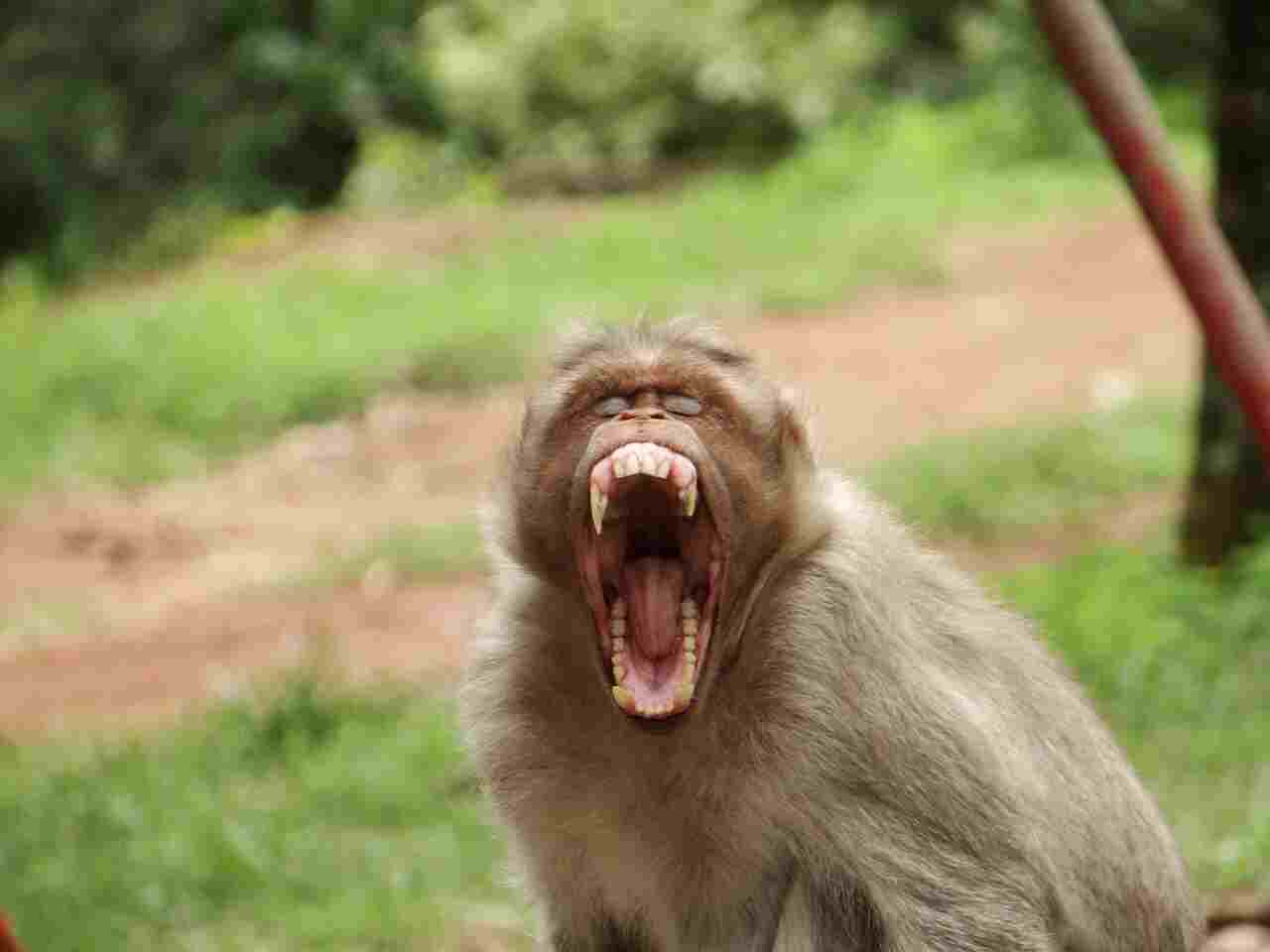
Gorilla:
Estimated to be around 1,300 PSI
Monkey:
Varies among species; generally lower than gorillas
Comparison: Gorillas possess a higher bite force compared to most monkeys.
Ecological Implications: Gorilla bite force relates to their herbivorous diet and the need to process tough vegetation, while monkeys’ bite forces align with their varied diets and adaptations for handling different food items.
6. Physical Offensive Advantages
Gorilla:
Strong arms and sharp canine teeth for display and intimidation
Dominance displays, including chest beating
Monkey:
Agile and quick movements
Some species exhibit aggressive behaviors in group settings
Comparison: Gorillas rely on physical strength and intimidation, while monkeys use agility and group dynamics for offensive strategies.
Ecological Implications: Offensive behaviors contribute to social hierarchies and resource acquisition within their respective habitats.
7. Physical Defensive Advantages
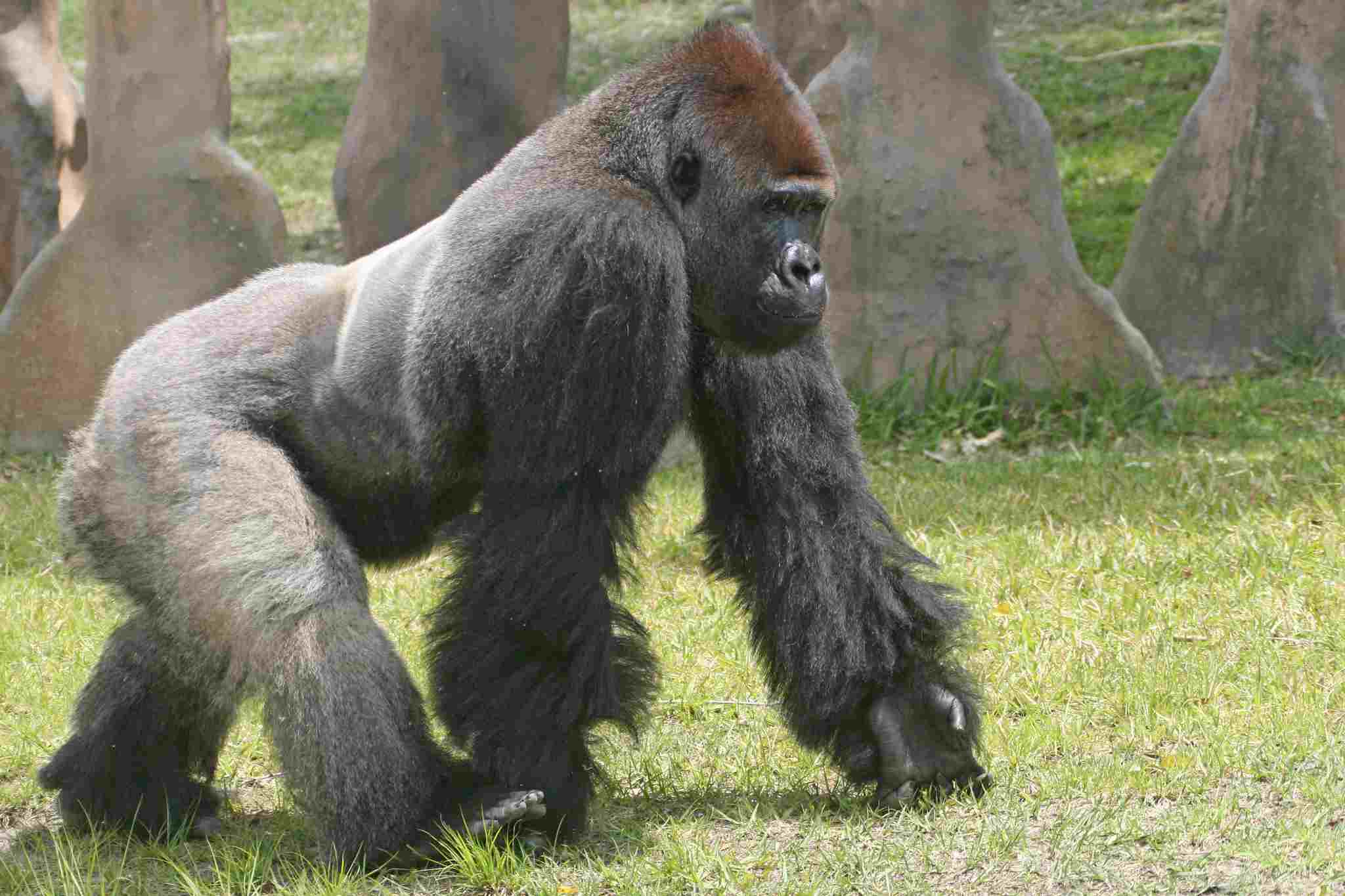
Gorilla:
Large size serves as a deterrent
Protective nature, especially towards infants
Monkey:
Agility and speed for evasion
Some species exhibit communal defense strategies
Comparison: Gorillas depend on their formidable size and protective instincts, whereas monkeys employ agility and communal defense mechanisms.
Ecological Implications: Defensive strategies are crucial for survival in various habitats, influencing interactions with predators and other potential threats.
8. Speed (Km/hour or Mile/hour)
Gorilla:
Estimated at 20 miles per hour (32 km/h)
Monkey:
Varies among species; generally faster due to smaller size
Comparison: Monkeys typically have higher speed capabilities compared to gorillas.
Ecological Implications: Speed is essential for evading predators and efficiently navigating through the complex vegetation in their habitats.
9. Agility
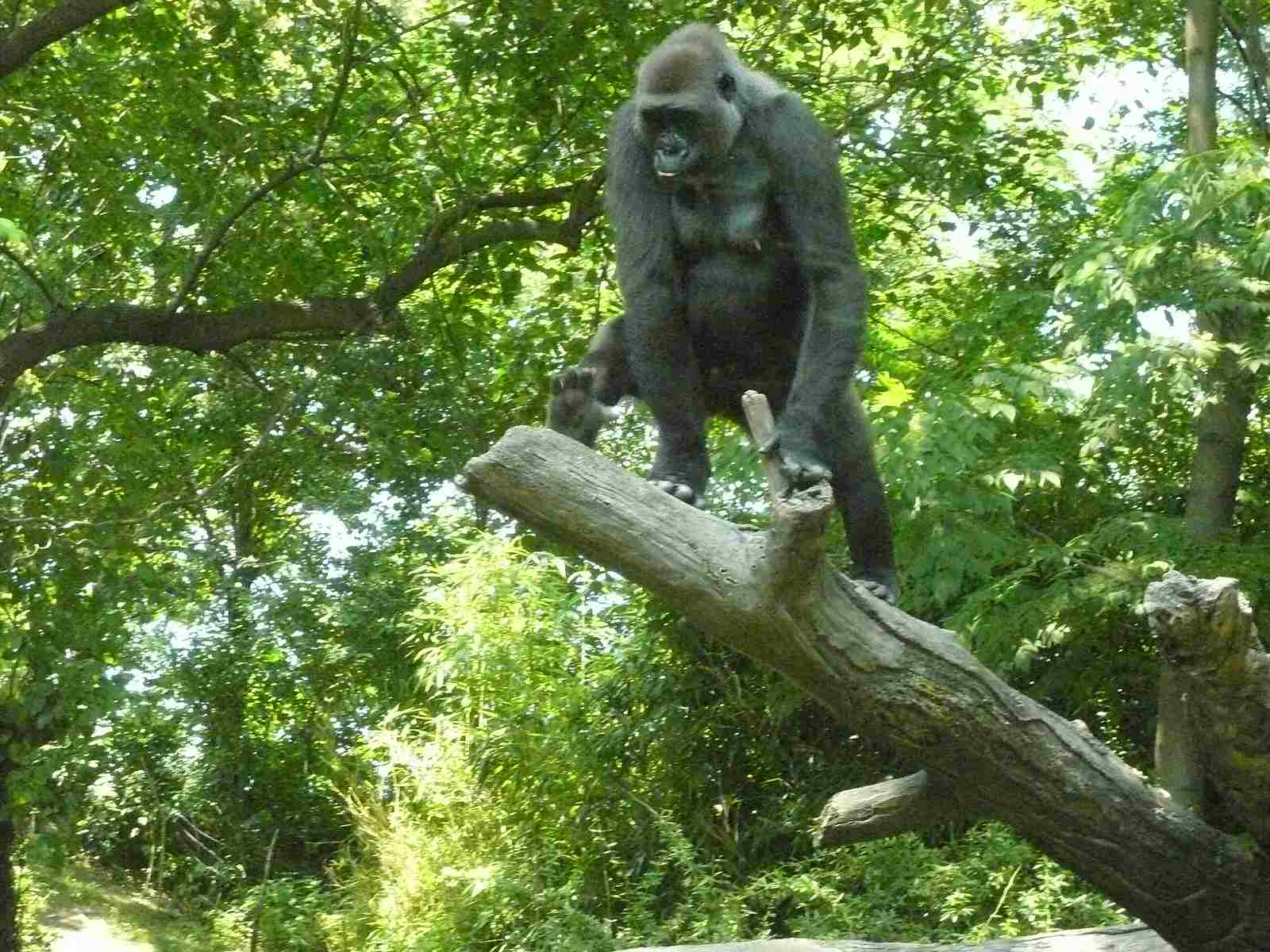
Gorilla:
Limited compared to monkeys, adapted for ground movement
Climbing ability is lower than most monkeys
Monkey:
Highly agile with strong limbs and prehensile tails
Well-adapted for tree-dwelling and rapid movement
Comparison: Monkeys excel in agility, particularly in arboreal environments, whereas gorillas exhibit more limited agility adapted for their ground-based lifestyle.
Ecological Implications: Agility influences their foraging strategies, escape tactics, and overall adaptation to their specific ecological niches.
10. Senses
Gorilla:
Well-developed senses of sight and hearing
Limited sense of smell compared to some other primates
Monkey:
Generally keen senses of sight, hearing, and smell
Adaptations in vision for arboreal lifestyles
Comparison: While both have well-developed senses, monkeys may exhibit adaptations in vision for their arboreal environments.
Ecological Implications: Enhanced senses aid in locating food, detecting predators, and navigating their respective habitats.
11. Overall Physical Capacity
Gorilla:
Strong and powerful, adapted for ground-based foraging
Limited agility compared to some primates
Monkey:
Varied physical capacities, adapted to diverse habitats
High agility and adaptability
Comparison: Gorillas emphasize strength, whereas monkeys showcase a broader range of physical capacities, including agility and adaptability.
Ecological Implications: Physical capacities shape their roles within ecosystems, influencing feeding strategies, and interaction with their surroundings.
12. Habitat Preference(s)
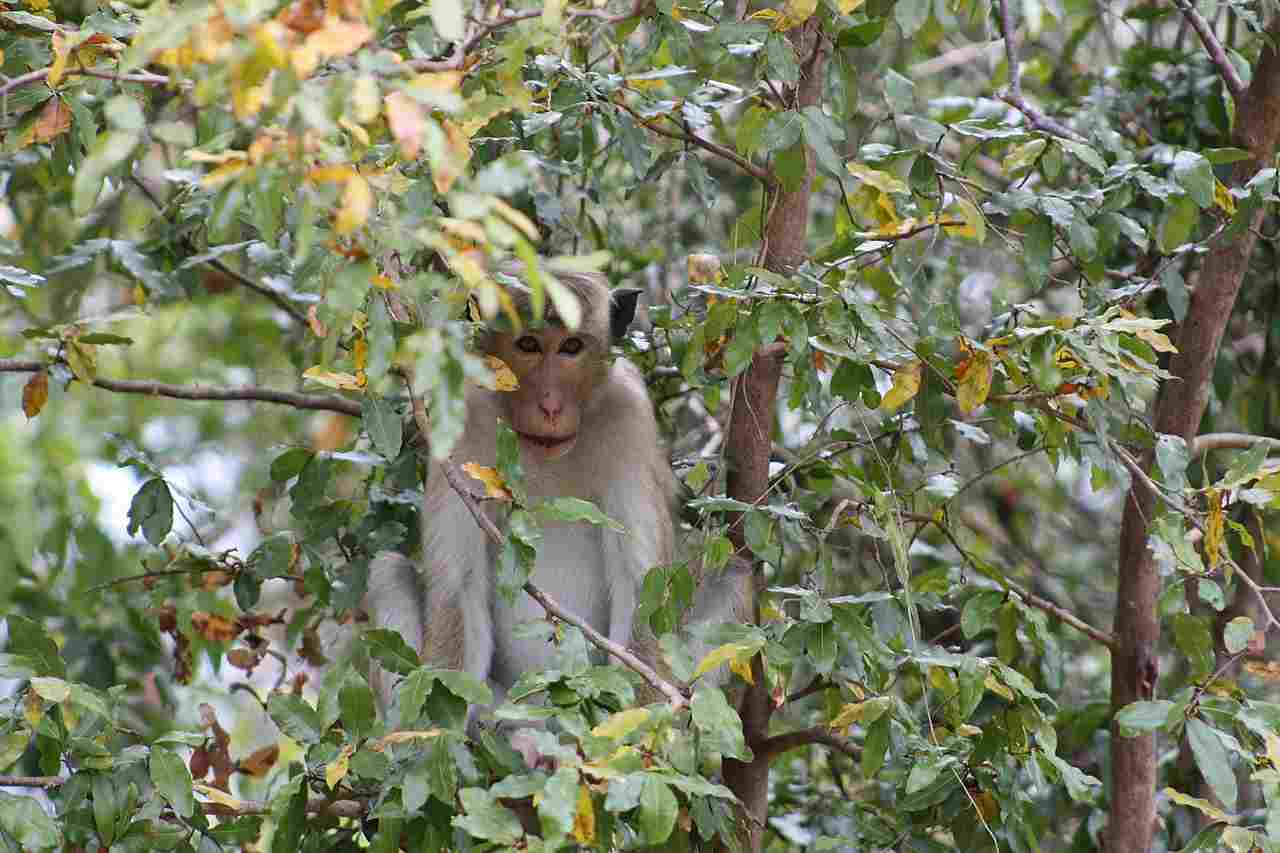
Gorilla:
Dense forests, often montane or lowland
Monkey:
Diverse habitats including tropical rainforests, savannas, and mountains
Comparison: Gorillas primarily inhabit dense forests, while monkeys demonstrate adaptability to a wider range of environments.
Ecological Implications: Habitat preferences impact their foraging behaviors, social structures, and overall ecological roles.
13. Tracks
Gorilla:
Distinctive large footprints with opposable big toes
Monkey:
Varied tracks based on species; typically smaller and with less defined toes
Comparison: Gorilla tracks are generally larger and more distinctive compared to the smaller and less pronounced tracks of monkeys.
Ecological Implications: Tracking is crucial for understanding their movement patterns, territory, and interactions within their habitats.
14. Lifespan
Gorilla:
Generally 35 to 40 years in the wild
Monkey:
Lifespan varies widely among species, ranging from around 10 to 50 years
Comparison: Gorillas tend to have a more consistent lifespan, while monkeys exhibit a broader range.
Ecological Implications: Lifespan impacts population dynamics, reproductive strategies, and overall ecological contributions.
15. Mode of Feeding
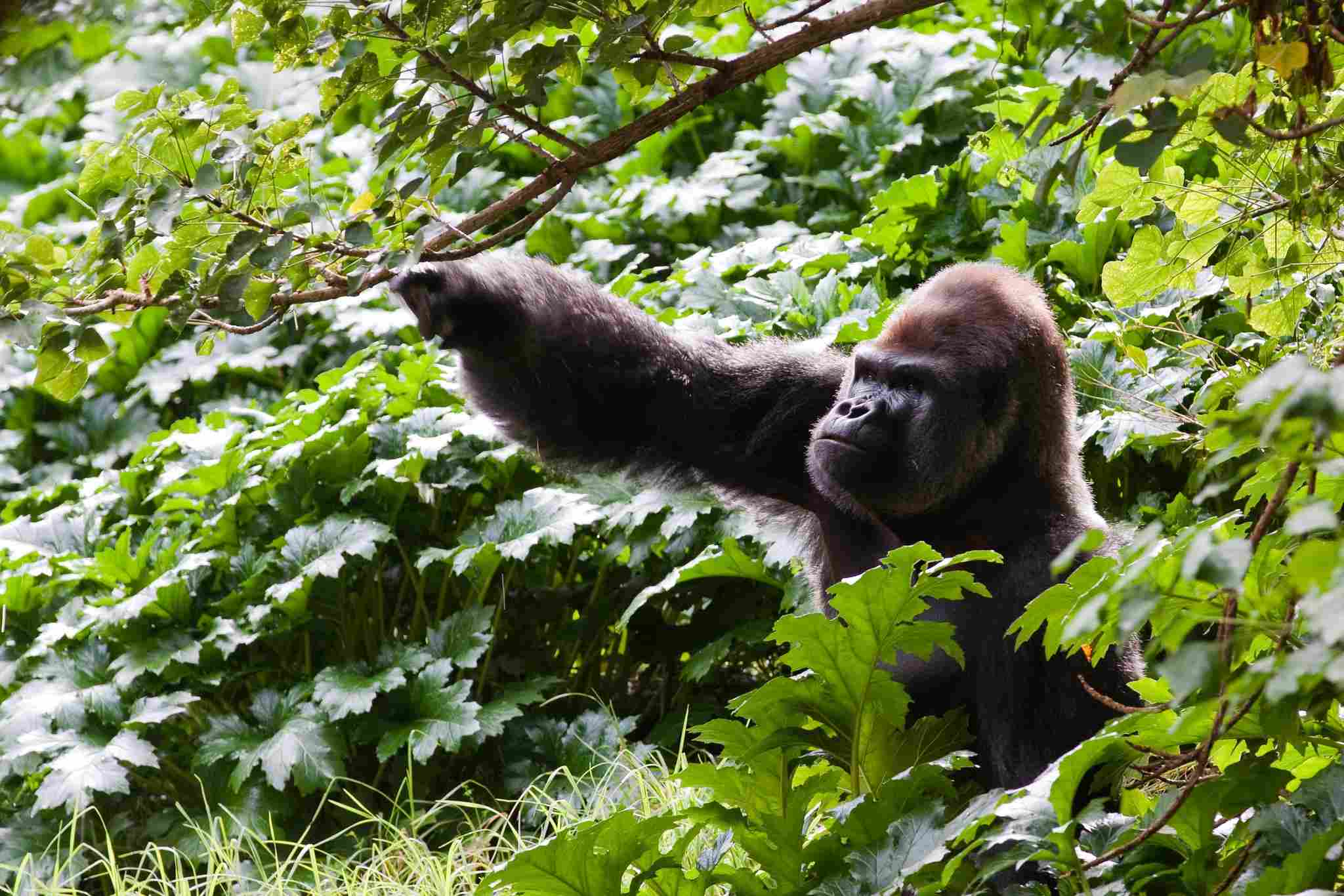
Gorilla:
Herbivorous; primarily folivores and frugivores
Spend a significant portion of the day foraging for vegetation
Monkey:
Varied diets including fruits, leaves, insects, and small animals
Feeding patterns vary based on species and habitat
Comparison: Gorillas focus on herbivorous diets, primarily consuming vegetation, while monkeys exhibit more dietary diversity.
Ecological Implications: Feeding habits influence plant dynamics and contribute to ecosystem balance in their respective habitats.
16. Intelligence
Gorilla:
Highly intelligent with problem-solving abilities
Tool usage observed in some populations
Monkey:
Varies among species; some display high levels of intelligence, especially in problem-solving tasks
Comparison: Both gorillas and monkeys demonstrate intelligence, with variations among species.
Ecological Implications: Intelligence aids in adapting to changing environments, social interactions, and obtaining food resources.
17. Social Behavior
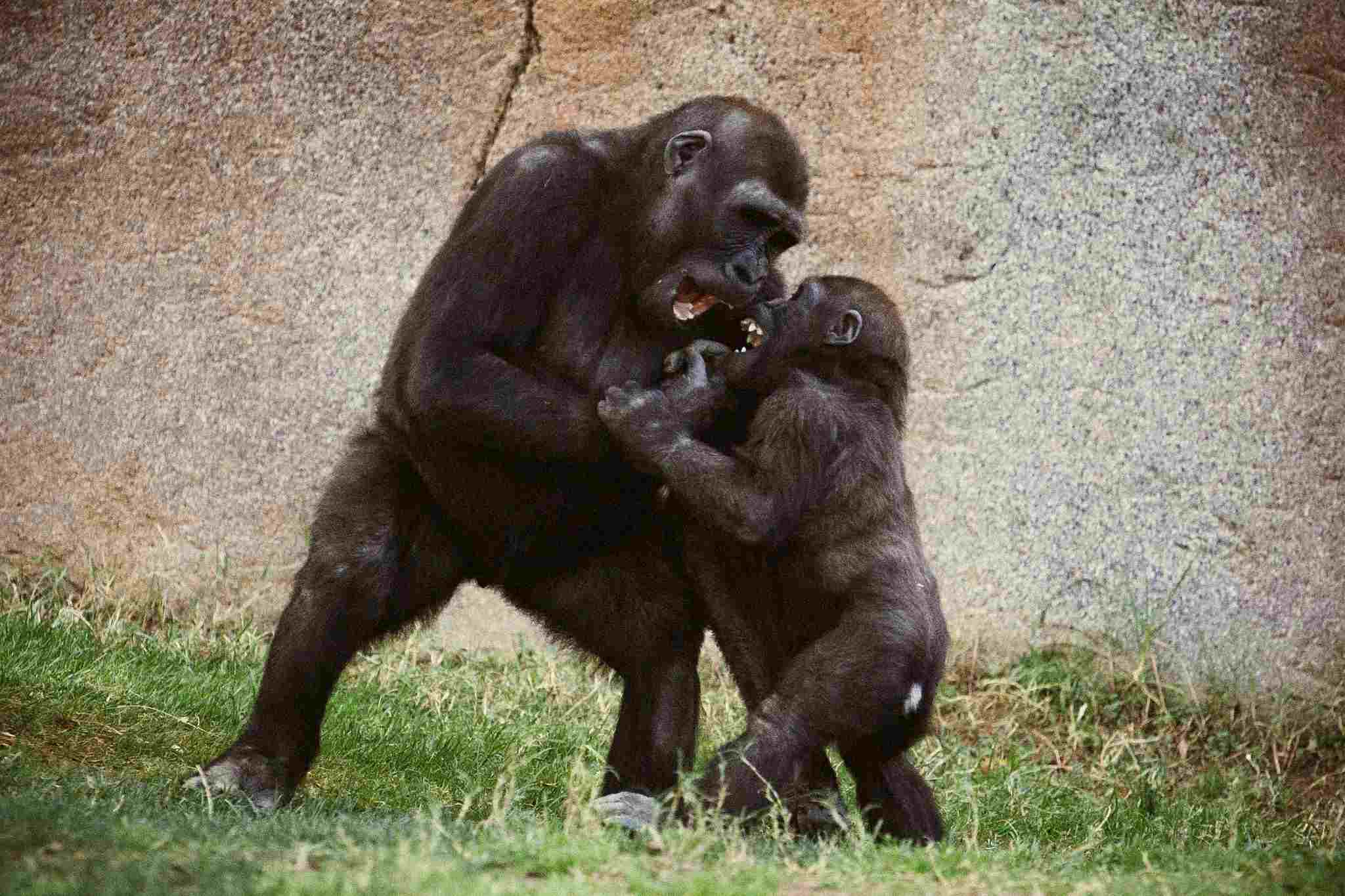
Gorilla:
Generally live in cohesive family groups led by a dominant male
Social structure involves complex communication and bonding
Monkey:
Varied social structures; some form large groups, others small family units
Social interactions involve grooming, vocalizations, and hierarchical relationships
Comparison: Gorillas exhibit more structured family units, while monkey social structures vary widely.
Ecological Implications: Social behavior influences communication, cooperation, and competition within their ecological communities.
18. Mode of Reproduction
Gorilla:
Typically low reproductive rate
Females give birth every 3 to 4 years
Single offspring per birth
Monkey:
Reproductive rates vary among species
Some monkeys give birth annually, while others have longer intervals
Number of offspring per birth varies
Comparison: Gorillas generally have a lower reproductive rate with a longer inter-birth interval compared to the more variable reproductive strategies of monkeys.
Ecological Implications: Reproductive patterns impact population dynamics, genetic diversity, and overall species resilience in their habitats.
19. Parental Behavior
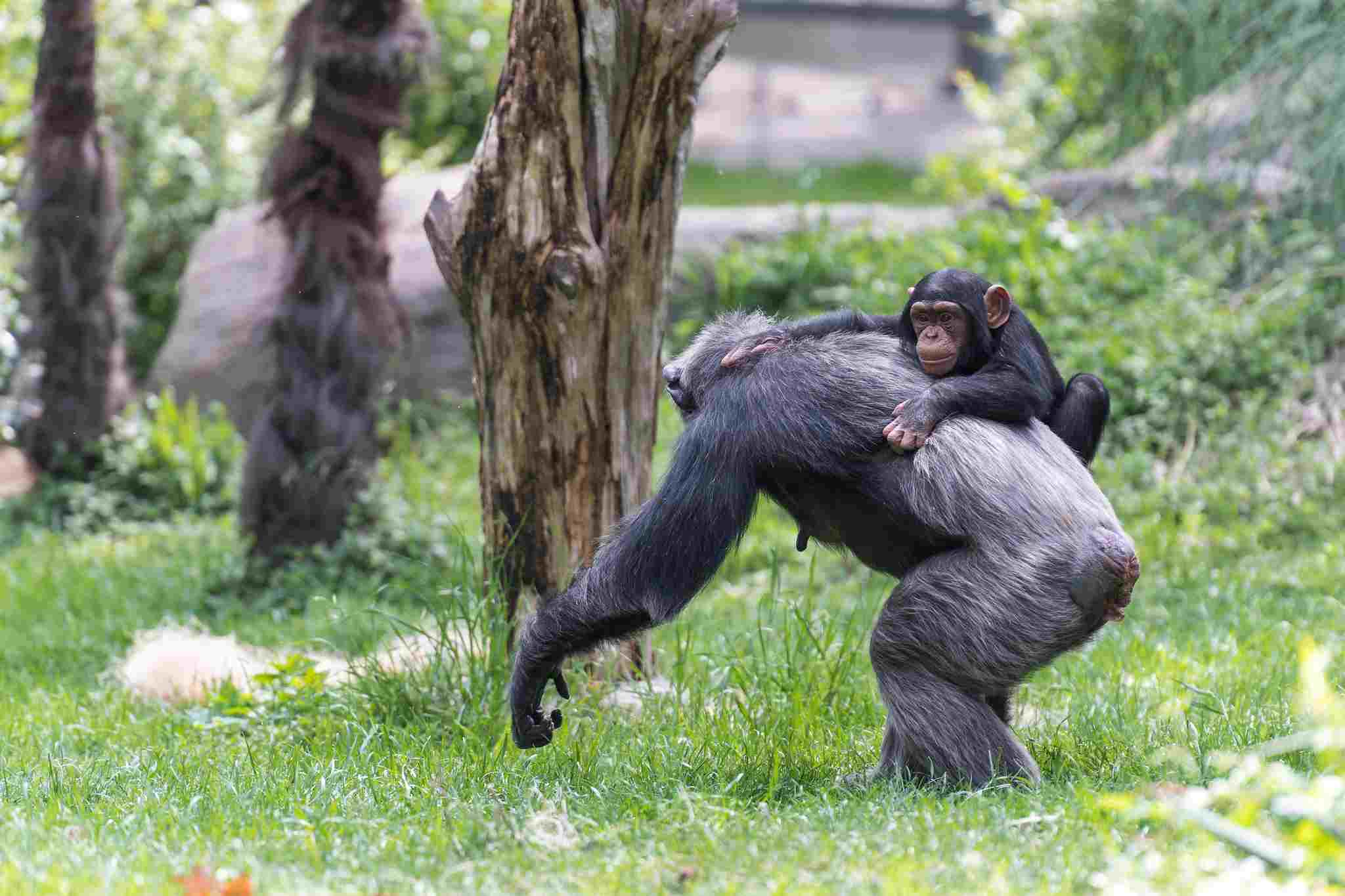
Gorilla:
Strong maternal bonds; females provide extensive care
Male silverbacks play protective roles in the group
Monkey:
Varied parental behaviors; some species have strong maternal care, others share parenting duties
Male involvement in parenting varies
Comparison: While both exhibit parental care, gorillas often show more pronounced maternal care, and parental roles vary widely among monkey species.
Ecological Implications: Parental behavior influences the survival and well-being of offspring, impacting population dynamics and social structure.
20. Proximity to Human-Inhabited Areas
Gorilla:
Generally found in remote and dense forest areas
Some populations may be in proximity to human settlements
Monkey:
Varied; some species inhabit forests near human settlements, others prefer more remote areas
Comparison: Monkeys may exhibit a broader range of proximity to human-inhabited areas compared to gorillas.
Ecological Implications: Human proximity can lead to habitat fragmentation, increased human-wildlife conflicts, and potential conservation challenges.
21. Behavior Toward Humans
Gorilla:
Generally shy and avoidant of direct human contact
Can display defensive behaviors if threatened
Monkey:
Responses vary; some species may be more curious or adaptable to human presence, while others may be cautious or aggressive
Comparison: Gorillas typically exhibit more reserved behavior towards humans compared to the varied responses observed in different monkey species.
Ecological Implications: Behavioral responses impact conservation efforts, tourism, and human-wildlife interactions, influencing the well-being and conservation status of these species.
22. Danger Posed to Humans
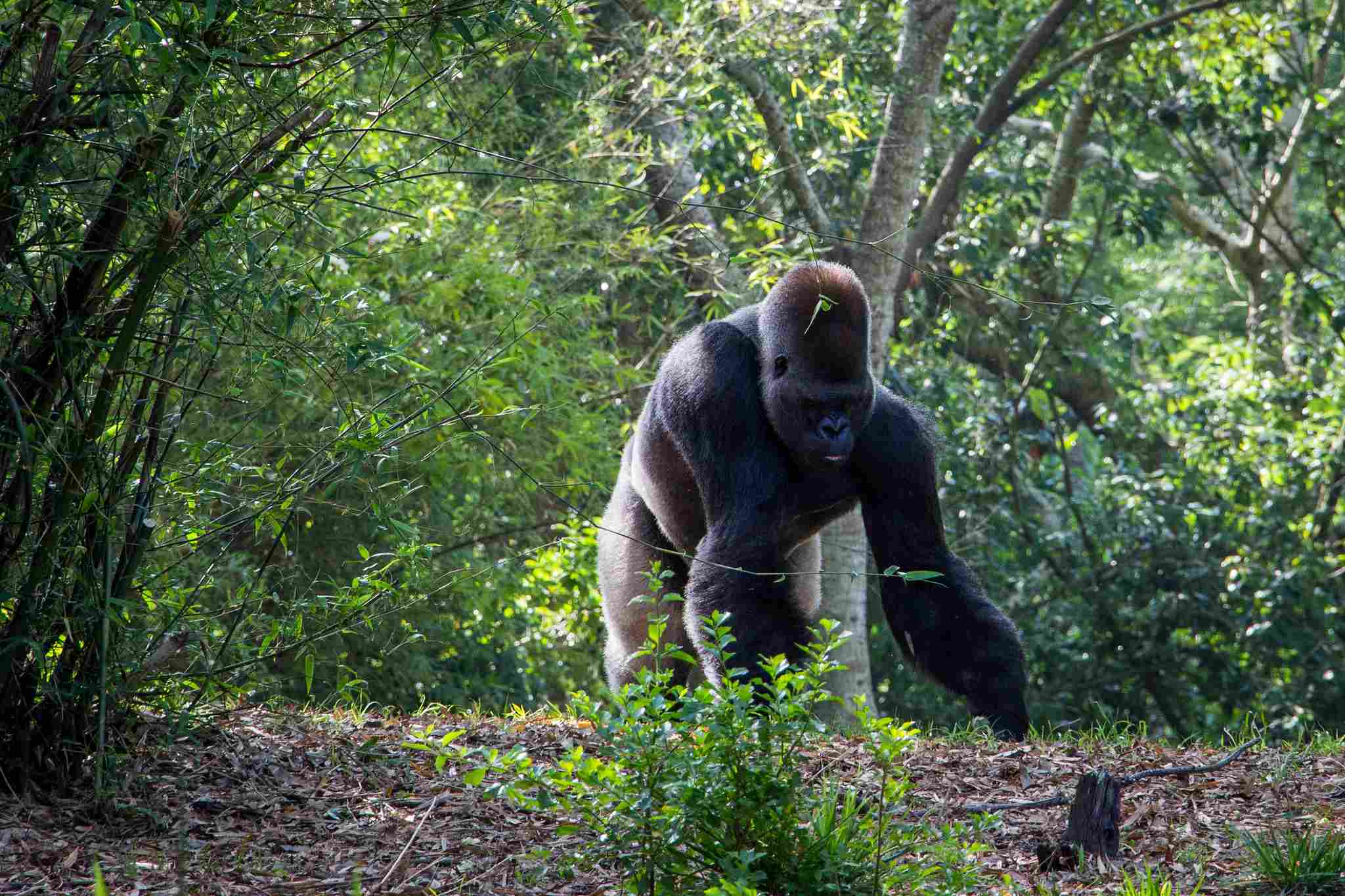
Gorilla:
Generally not considered dangerous to humans
Rare instances of aggression, usually when they feel threatened or cornered
Monkey:
Rarely pose significant danger, but some species can become aggressive, especially in defense of territory or young
Comparison: While both are generally not considered highly dangerous, some monkey species may exhibit more aggression, especially in specific circumstances.
Ecological Implications: Understanding potential danger helps in managing human-wildlife interactions and mitigating conflicts for conservation efforts.
23. Associated Precautions
Gorilla:
Caution needed to avoid provoking defensive responses
Habituation protocols followed in gorilla tourism to minimize disturbance
Monkey:
Precautions include avoiding direct eye contact, sudden movements, and respecting their territory
Conservation guidelines often stress minimal interference in wild habitats
Comparison: Both gorillas and monkeys require careful human interactions with specific precautions, with gorillas often having more established habituation protocols.
Ecological Implications: Human behavior around these species affects their well-being and contributes to conservation efforts.
24. Conservation Status
Gorilla:
Varied conservation statuses among species
Mountain gorillas, for example, are listed as endangered
Monkey:
Diverse conservation statuses; some species may be endangered while others are of least concern
Comparison: Conservation statuses vary widely among gorilla and monkey species.
Ecological Implications: Understanding conservation statuses aids in prioritizing conservation efforts and implementing effective protection measures.
Summary of Comparison
Taxonomy:
Gorillas belong to the family Hominidae, while monkeys span varied families such as Cercopithecidae, Cebidae, Callitrichidae, etc.
Appearance:
Gorillas have a robust build, prominent sagittal crest, and dark hair.
Monkeys display diverse appearances, sizes, and fur colors, adapted for varied habitats.
Size:
Gorillas are larger, with males standing around 5.6 to 5.9 feet, while monkeys vary widely in size.
Weight:
Gorillas, especially males, are heavier, ranging from 300 to 400 pounds, whereas monkeys have a broader weight range.
Bite Force (PSI):
Gorillas have a higher bite force, around 1,300 PSI, compared to most monkeys.
Physical Offensive Advantages:
Gorillas rely on strength and intimidation; monkeys use agility and group dynamics.
Physical Defensive Advantages:
Gorillas depend on size and protection; monkeys utilize agility and communal defense.
Speed:
Gorillas have an estimated speed of 20 mph, while monkeys generally have higher speed capabilities.
Agility:
Gorillas exhibit limited agility adapted for ground movement; monkeys are highly agile, especially in trees.
Senses:
Both have well-developed senses, with monkeys potentially exhibiting adaptations for arboreal life.
Overall Physical Capacity:
Gorillas emphasize strength; monkeys showcase a broader range of physical capacities.
Habitat Preference(s):
Gorillas prefer dense forests, while monkeys adapt to various environments.
Tracks:
Gorilla tracks are larger and more distinctive; monkey tracks vary based on species.
Lifespan:
Gorillas generally live 35 to 40 years; monkeys’ lifespan varies widely among species.
Mode of Feeding:
Gorillas are herbivores, primarily consuming vegetation; monkeys have diverse diets.
Intelligence:
Both demonstrate intelligence with variations among species.
Social Behavior:
Gorillas have structured family groups; monkey social structures vary widely.
Mode of Reproduction:
Gorillas have a lower reproductive rate with longer intervals; monkeys exhibit variable reproductive strategies.
Parental Behavior:
Gorillas often show more pronounced maternal care; monkey parental roles vary.
Proximity to Human-Inhabited Areas:
Gorillas are generally found in remote areas; monkeys may inhabit areas near human settlements.
Behavior Toward Humans:
Gorillas are generally reserved; monkey responses vary widely.
Danger Posed to Humans:
Both are generally not highly dangerous, but some monkeys may exhibit aggression.
Associated Precautions:
Precautions are needed for both species to avoid provocation and ensure minimal interference.
Conservation Status:
Conservation statuses vary widely among gorilla and monkey species.
Conclusion
-Similarities:
Both gorillas and monkeys belong to the order Primates and share common evolutionary ancestry.
Both exhibit complex social behaviors, high levels of intelligence, and play crucial roles in their ecosystems.
-Differences:
Gorillas are larger, primarily ground-dwelling herbivores, while monkeys vary greatly in size, diet, and habitat preferences.
Reproductive strategies, parental care, and conservation statuses differ significantly between gorillas and monkeys.
